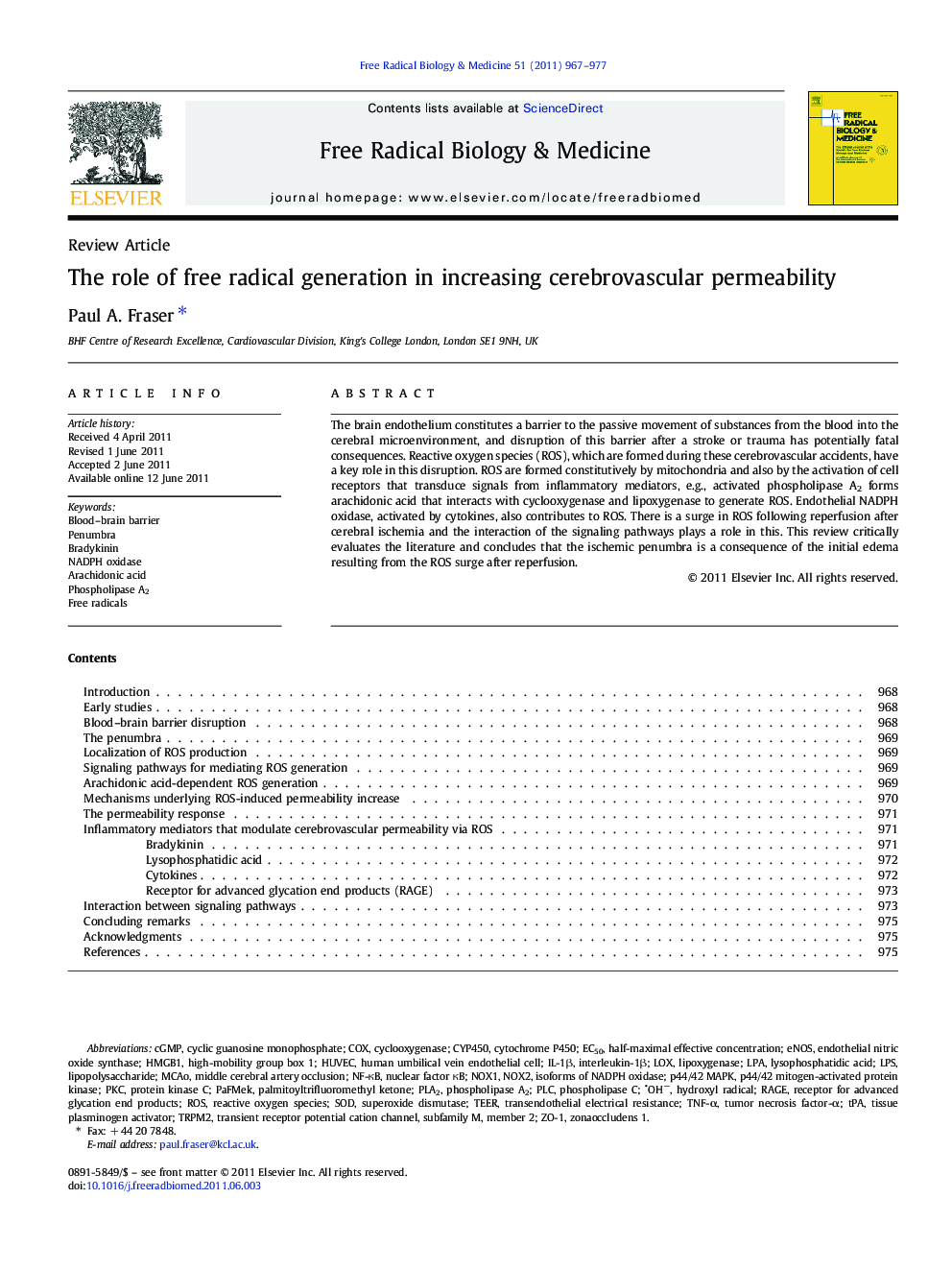| کد مقاله | کد نشریه | سال انتشار | مقاله انگلیسی | نسخه تمام متن |
|---|---|---|---|---|
| 1909069 | 1046697 | 2011 | 11 صفحه PDF | دانلود رایگان |

The brain endothelium constitutes a barrier to the passive movement of substances from the blood into the cerebral microenvironment, and disruption of this barrier after a stroke or trauma has potentially fatal consequences. Reactive oxygen species (ROS), which are formed during these cerebrovascular accidents, have a key role in this disruption. ROS are formed constitutively by mitochondria and also by the activation of cell receptors that transduce signals from inflammatory mediators, e.g., activated phospholipase A2 forms arachidonic acid that interacts with cyclooxygenase and lipoxygenase to generate ROS. Endothelial NADPH oxidase, activated by cytokines, also contributes to ROS. There is a surge in ROS following reperfusion after cerebral ischemia and the interaction of the signaling pathways plays a role in this. This review critically evaluates the literature and concludes that the ischemic penumbra is a consequence of the initial edema resulting from the ROS surge after reperfusion.
Journal: Free Radical Biology and Medicine - Volume 51, Issue 5, 1 September 2011, Pages 967–977